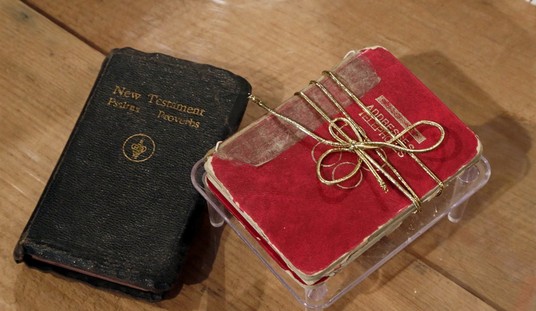
During the Constitutional Convention of 1787, the idea of a standing army was a legitimate fear of many of our Founders. Using a militia in their stead held wide appeal among those who feared a standing army could be used to trample on the rights of the people of the new Republic. However, others such as Alexander Hamilton, believed that militias could never be relied upon to provide the necessary safeguards during a national emergency or foreign invasion.
Hamilton and others knew all too well from experiences during the Revolutionary War that militias were not a reliable means of national defense. During the outbreak of war, one does not have time to take a breather to raise and train an army. Therefore, the Constitution granted Congress authority to establish armies, even in peacetime. Coupled with the fact that the Constitution forbade states from maintaining armies, there were considerable fears that a standing army could be used for tyrannical purposes as evidenced by history in Europe.
One possible solution to the conundrum would have been to prevent Congress from interfering in control of state militias. That would have been self-defeating resulting in a non-effective fighting force. Thus, the controversy was never solved, nor did the Founders purport to solve it. They simply presumed that militias would continue to exist and that Congress can regulate them.
Although James Madison thought the fears of tyranny were overblown since our system of government was different than that of any European power that had abused a standing army against its own citizens, there was another reason. Madison knew that Americans were well-armed and would be a formidable check on government tyranny (Federalist #46).
In the debate between Federalists and Anti-Federalists in this area, they shared two things in common. First, the Constitution gave the federal government control over an army and militias and was necessary for the reasons stated above. Second, the federal government should never have the authority to disarm the citizenry. The main difference was over whether an armed citizenry could adequately safeguard liberty.
Thus the prefatory clause of the Second Amendment is nothing but a nod to the Anti-Federalists given the original shared consensus that citizens may keep and bear arms and that the federal government cannot infringe on that right any more than they could on any other right listed in the first ten amendments. It is a historical statement of fact at that time and neither qualifies nor diminishes the operative second clause.
And so it was for the vast bulk of American history. Gun control laws were practically non-existent and are a product more of the Progressive era than based on Constitutional law. Most of the laws were aimed at keeping firearms out of the hands of irresponsible citizens, and then later aimed to ban or control certain types of firearms.
In 2008, the Supreme Court ruled that the possession of firearms in the home is constitutionally-protected in Heller vs. DC. They later applied that consensus to state laws in McDonnell vs. Illinois. The Court did recognize that banning firearms in certain “sensitive locations like schools and government buildings” was likely permissible, as were laws designed to keep firearms out of the hands of the mentally ill or convicted felons. No gun advocate disagrees.
But, Heller delved not only into the history of the 2nd Amendment, but also the underlying philosophical premise- the right to self-defense which has a more rich history than even the right to free speech. Nevertheless, although the Supreme Court has had several opportunities to address this issue- especially in carrying firearms outside the home and concealed carry permit regimens- they have conveniently ignored the issue and refused to instill some semblance on a hodgepodge of state laws dependent on the partisan make-up of a state legislature.
In Heller, the majority conceded that a firearm for self defense was as, or even more likely, to be beneficial in a public setting as it was to be in one’s home. Yet, liberal states- despite Constitutional law, Supreme Court decisions, commonsense and facts- think otherwise. In California, there are about 20,000 valid concealed carry permits in a population of 26 million residents over the age of 20. In Texas, there are 519,000 such permits in a population of 17 million yet the firearm mortality rate in both states is just about equal. The belief that gun control measures decrease firearm mortality is simply false.
In a case out of California- Peruta vs. California- in a 2-1 decision, that court struck down the state’s concealed carry law as too restrictive of Second Amendment rights. However, upon rehearing before an en banc 9th Circuit Court of Appeals, they ruled otherwise and negated the 2-1 decision. They flatly ruled that the Second Amendment does not guarantee anyone the right to carry a weapon- concealed or otherwise- in public. There must be a documented threat, restraining order or other such need demonstrated.
When presented with this case, the Supreme Court decided 7-2 not to take the case. Usually the Court will simply grant review (with the pertinent questions for briefs and argument), or not grant review and leave it at that. Therefore, it was unusual for an “opinion,” authored by Clarence Thomas and joined by Neil Gorsuch, to be attached in dissent. Hence, the Ninth Circuit’s decision stands as does the California law. The reason(s) for not granting review were never articulated by the seven-member majority.
The Roberts Court seems content to make a broad statement of law (Heller), apply it to the states (McDonnell) which was hardly a tough decision (although 5-4), sweep aside prefatory clause arguments and even agree that the possession of firearms for self-defense is the underlying right. They then leave it to the states to decide the outer edges of permissible infringements on that right. The problem is that those outer edges keep pushing closer and closer to the core fundamental right of self-defense. Further, those edges depend on which state and which circuit court of appeals in which you happen to reside.
In fact, these onerous concealed carry laws, bans on ammunition types and other such legislation are a de facto disarming of the citizenry which is something our Founding Fathers, for very valid reasons, never envisioned. The problem is that the gun control lobby will not stop at pushing those edges closer and closer to the core fundamental right where even non-lethal weapons like tasers and stun guns are already being banned. Unless Roberts gains some semblance of a spine and takes a case making a declarative statement in this area, the tyranny our Founders feared will become a reality.













Join the conversation as a VIP Member